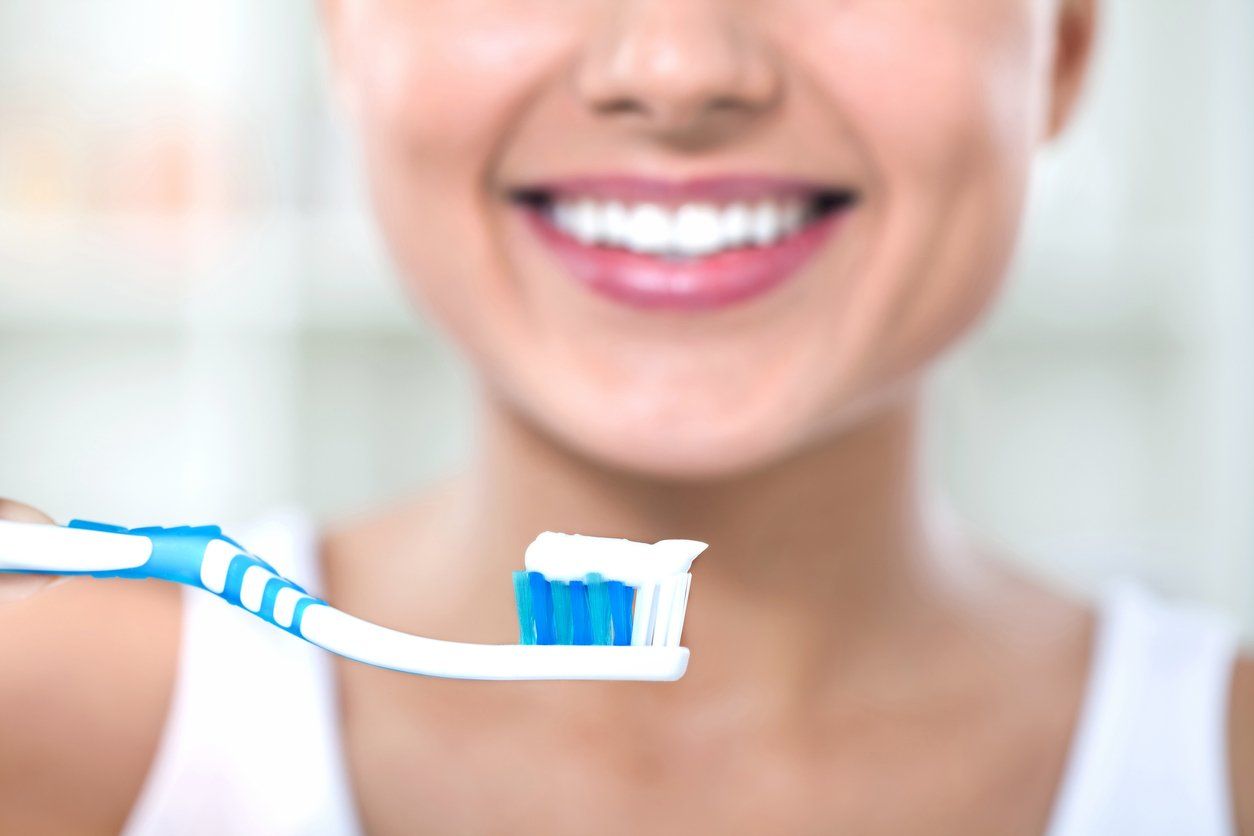Fluoride: A Safe and Effective Solution for Healthier Teeth
For many of us, fluoridated toothpaste is simply a fact of life. We brush our teeth with it and oftentimes drink it in our community water — without really understanding how pivotal this mineral is for our oral health. Let's take a closer look at the science and history of fluoride. When was it first used in community water? Is it safe? How does toothpaste with fluoride strengthen your teeth? And how can you take your dental health to the next level with a professional fluoride treatment?
The History of Fluoride for Dental Health
You might be surprised to find out that fluoride is a common, naturally-occurring mineral. In fact, all water sourcescontain some fluoride, and it's the 13th most abundant mineral in the earth's crust. In the early 1900's, researchers discovered that citizens of certain cities in the United States had especially decay-resistant teeth. Eventually, they realized that there was a correlation between low rates of decay and high levels of naturally-occurring fluoride in the town's public drinking water. In 1945, the city of Grand Rapids, Michigan, became the first city to add fluoride to its drinking water to protect its citizens' teeth.
Researchers then embarked on a 15-year study, analyzing how fluoridated water impacted the people of Grand Rapids. What they discovered was indeed encouraging: the children who were born after fluoride was introduced had 60% fewer dental caries. Now, fluoride water treatments benefit over 200 million people. Most toothpastes and rinses contain fluoride, and dentists nationwide recommend it for their patients to support strong, healthy teeth.
Is Fluoride Safe?
Though there may be some myths and misinformation circulating around fluoride, it's been proven to be completely safe and effective. Not only does it reduce cavitiesfor both children and adults by 25% when it's added to community drinking water, but it's also been shown by a U.S. Public Service Reviewto be completely safe for humans. In general, brushing your teeth with a fluoridated toothpaste is one of the best ways to prevent tooth decay.
The Science of Fluoride: How does it Benefit Teeth?
So, how exactly does this naturally-occurring mineral help protect your teeth from dental decay? How do the different forms of fluoride work? Let's break it down:
Topical Fluoride
As we eat and drink, bacteria in our mouths interact with starches from food. As a result of this interaction, a thin film called plaque is created. Then, the acids in plaque gradually eat away at our tooth until decayoccurs. This decay takes the form of small holes called caries, which can then develop into full-blown cavities.
Our teeth have an incredible ability to fill in small damages caused by plaque. This process is called remineralization— which is when new minerals, called enamel crystals deposit on damaged areas of the tooth. Incredibly, fluoride supports the process of remineralization by making enamel crystals bigger and helping them grow faster. When you apply fluoride to your teeth, you're simply enhancing your body's natural processes.
Systemic Fluoride
When small amounts of fluoride are added to your drinking water, it's absorbed like other nutrients. Then, it enters the bloodstream. From the bloodstream, the fluoride travels to developing teeth budsand interacts with the teeth's mineral crystals to make them stronger and more resistant to decay. This is why fluoride is so effective at helping children develop healthy teeth.
How to Incorporate Fluoride for Healthy Teeth

Luckily, it's easy to reap the benefits of fluoride to support tooth health:
- Toothpaste. It's important to brush your teeth at least twice a meal — after meals if possible — with a toothpaste that contains fluoride. While the majority of toothpastes do contain fluoride due to its proven benefits, you can always look for the ADA Seal of Approvalon your toothpaste. When checking ingredient labels, fluoride could be listed as either sodium monofluorophosphate, sodium fluoride, or stannous fluoride.
- Rinses. Though nothing takes the place of brushing your teeth, you can also get the benefits of fluoride from your favorite mouthwash or rinse. Just make sure your rinse contains fluoride, and swish it around your mouth after meals, or whenever you could use a quick freshen-up.
- Water. Almost 75% of communities in the United States have fluoride programs for their public water supply. All told, the Centers for Disease Control and Prevention refer to fluoridated community wateras one of the top 10 public health achievements in the 20th century. You can check resources like My Water's Fluoride (MWF)to find out if your community participates.
Professional Fluoride Treatments
Did you know that your dentist probably offers professional fluoride treatments? These treatments are aimed towards children and for those who have a high risk of developing dental cavities. This safe, effective treatment will harden your enamel and help keep your teeth safe from cavities and decay. Why is this treatment so powerful at reducing cavities? Well, it contains fluoride at a higher concentrationthan in a store bought toothpaste or rinse.
Depending on your circumstances, your dentist may recommend that receive a fluoride treatment at certain intervals (like every six months or every 12 months) to keep your health strong and healthy.
What to Expect from a Professional Fluoride Treatment?
Luckily, this powerful intervention is quick, simple, and painless. Though each dentist has a slightly different technique, here's what you can expect:
- Fluoride is Applied. In the form of a solution or gel, the dentist will apply the fluoride to your teeth. There are a few ways to do this: your dentist can use a cotton swab to apply fluoride to your teeth's surface, use it as a rinse, or put it in a tray which is then placed in your mouth for a few minutes.
- Wait for it to Absorb . Usually, you'll be asked to avoid eating, drinking, or rinsing your mouth out for 30 minutes afterwards so that the fluoride has time to take hold and work on strengthening your teeth.
Keeping Your Teeth Healthy

With all the great discoveries in oral health in the last few centuries — especially fluoride — it's more easier than ever to keep your teeth healthy and strong. To make the best of fluoride's properties, make sure you brush twice a day and rinse with a fluoridated product.
At Marie Simon Dentistry, we provide professional fluoride treatments for our patients from Avon Lake, Sheffield Lake, Bay Village, Avon, and Westlake in Ohio. If you want to get in touch about getting your strongest, healthiest smile, please contact us today.










